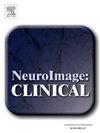Can repetitive transcranial magnetic stimulation promote recovery of consciousness in patients with disorders of consciousness? A randomized controlled trial
IF 3.6
2区 医学
Q2 NEUROIMAGING
引用次数: 0
Abstract
Background
Disorders of consciousness (DoC) are characterized by a broad decline in background excitatory synaptic activity and varying levels of cerebral network disruption. Repetitive transcranial magnetic stimulation (rTMS), a neuromodulatory technique, is anticipated to assist the recovery of consciousness. Nonetheless, ongoing debates persist regarding its effectiveness, in light of the inconsistent results of recent research.
Objective
The purpose of this study is to investigate the efficacy of rTMS in promoting recovery of consciousness in patients with DoC and to probe its impact on activity of cerebral functional networks.
Methods
Forty-eight patients with DoC were included in this randomized controlled trial (Chinese Clinical Trial Registry: ChiCTR2100044930). Twenty-four patients in the control group accepted conventional therapy. Another 24 patients in the rTMS group received extra rTMS over the dorsolateral prefrontal cortex (DLPFC) once per workday during a 4-week intervention phase. Primary outcome was the proportion of patients emerging improvement on level of consciousness (LOC) based on coma recovery scale- revised (CRS-R) at the end of intervention. Furthermore, other behavioral scales such as the clinical global impression-improvement (CGI-I) and resting state-electroencephalography (rs-EEG) microstate were employed as secondary outcomes. Different microstates served as tools to detect the activity of respective corresponding resting state cerebral functional networks.
Results
In comparison to the control group, the rTMS group exhibited a higher proportion of patients emerging improvement on LOC at post-intervention, with a risk ratio of 3.06 (95 % CI 1.54 to 6.09, P = 0.001). The distribution of patients with each grade of CGI-I across the groups also implied a trend that favored the rTMS group (common odds ratio:0.20, 95 % CI 0.065 to 0.63, P = 0.006). With respect to microstate E, the rTMS group had a significantly reduced global explained variance (GEV) was observed in the rTMS group (Z = -2.61, Pbonf = 0.027).
Conclusion
High-frequency rTMS over the DLPFC could promote recovery of consciousness in patients with DoC. It might get involved in modulating the balance among cerebral functional networks and facilitating consciousness recovery.
反复经颅磁刺激能促进意识障碍患者的意识恢复吗?随机对照试验
意识障碍(DoC)的特征是背景兴奋性突触活动的广泛下降和不同程度的大脑网络破坏。重复经颅磁刺激(rTMS)是一种神经调节技术,有望帮助意识恢复。尽管如此,鉴于最近的研究结果不一致,关于其有效性的争论仍在继续。目的探讨rTMS对DoC患者意识恢复的促进作用及其对脑功能网络活动的影响。方法将48例DoC患者纳入随机对照试验(中国临床试验注册号:ChiCTR2100044930)。对照组24例接受常规治疗。在为期4周的干预阶段,rTMS组的另外24名患者在每个工作日接受一次超过背外侧前额皮质(DLPFC)的额外rTMS。主要结局是干预结束时基于昏迷恢复量表修订(CRS-R)的患者意识水平(LOC)出现改善的比例。此外,其他行为量表如临床整体印象改善(CGI-I)和静息状态-脑电图(rs-EEG)微状态被用作次要结果。不同的微观状态作为检测相应静息状态脑功能网络活动的工具。结果与对照组相比,rTMS组干预后LOC出现改善的比例更高,风险比为3.06 (95% CI 1.54 ~ 6.09, P = 0.001)。各组CGI-I各等级患者的分布也表明rTMS组更有利(常见优势比:0.20,95% CI 0.065 ~ 0.63, P = 0.006)。在微观状态E方面,rTMS组的整体解释方差(GEV)显著降低(Z = -2.61, Pbonf = 0.027)。结论高频rTMS可促进DoC患者的意识恢复。它可能参与调节大脑功能网络之间的平衡,促进意识恢复。
本文章由计算机程序翻译,如有差异,请以英文原文为准。
求助全文
约1分钟内获得全文
求助全文
来源期刊

Neuroimage-Clinical
NEUROIMAGING-
CiteScore
7.50
自引率
4.80%
发文量
368
审稿时长
52 days
期刊介绍:
NeuroImage: Clinical, a journal of diseases, disorders and syndromes involving the Nervous System, provides a vehicle for communicating important advances in the study of abnormal structure-function relationships of the human nervous system based on imaging.
The focus of NeuroImage: Clinical is on defining changes to the brain associated with primary neurologic and psychiatric diseases and disorders of the nervous system as well as behavioral syndromes and developmental conditions. The main criterion for judging papers is the extent of scientific advancement in the understanding of the pathophysiologic mechanisms of diseases and disorders, in identification of functional models that link clinical signs and symptoms with brain function and in the creation of image based tools applicable to a broad range of clinical needs including diagnosis, monitoring and tracking of illness, predicting therapeutic response and development of new treatments. Papers dealing with structure and function in animal models will also be considered if they reveal mechanisms that can be readily translated to human conditions.
 求助内容:
求助内容: 应助结果提醒方式:
应助结果提醒方式:


